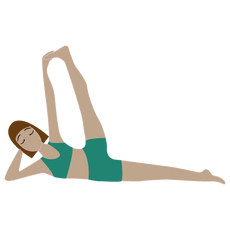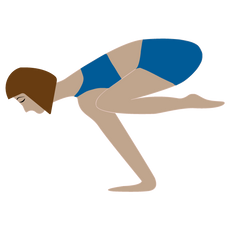Why I recommend yoga
- mcuttica55
- Sep 9, 2020
- 4 min read
Updated: Jul 21, 2022

I find myself recommending yoga a lot and thought it might be useful to expand on why I feel it can be helpful for so many of the diverse and unique characters that walk through my door.
So what exactly is yoga?
Yoga is a spiritual practise that was founded thousands of years ago in India and was originally a practise of stillness and breath control to facilitate quietening of the mind.
However, over the last few hundred years, and as late as the 1920s, a set of postures (asanas) and movements were incorporated and Hatha yoga was born.
Hatha simply means that the practice will have an element of movement in it, either a mixture of static postures or dynamic, moving in time with the breath, postures both of which are considered an invaluable tool in preparing the body for the more subtle practises of pranayama (breath work) and meditation which are typically at the end of the practice.
Types of Hatha yoga include Vinyasa, Iyengar, Ashtanga, Bikram and Kundalini among others.
So what are the benefits?
Well, first and foremost, yoga provides a slow but steady physical body-wide workout. It can strengthen, tone, enhance flexibility and help you relax, but the magic word for me as an osteopath is 'slow'.
In our fast-paced, stressful, modern lives we are forever moving and thinking at 100 miles per hour and our exercise regime has largely gone the same way, with us scheduling in a quick cardio-vascular charged gym class, boot camp, running or cycling.
On the contrary, yoga encourages us to slow down and pay attention to how our body feels as we move symmetrically from posture to posture. If we can leave a yoga class with an enhanced sense of body-awareness then we can begin to look after ourselves just a little bit better and that is a good start…
Secondly, and equally important, is the connection between the breath and our body, or more specifically our central nervous system (CNS). Our CNS is made up of the brain and spinal cord and together they are responsible for controlling everything our body does.
The CNS processes and coordinates all conscious sensory information (sight, hearing, touch, taste and smell) and motor information (moving any body part); it auto-regulates all bodily functions for life (heart-beat, breathing, digestion) and it organises and processes our thoughts and feelings.
The busier we are, the faster we breathe and conversely the faster we breathe, the busier our poor little bodies are.
Let me explain further...
The CNS functions as two halves - one half is called the SYMPATHETICS and the other is called the PARA-SYMPATHETICS and they work in perfect harmony with each other (like a see-saw) so while one is busy working, the other is quiet, and vice versa.
When a sudden emergency arises or a deadline looms, the brain initiates a sympathetic response to provide you with the energy to deal with the crisis at hand. As a result, the eyes dilate, the heart beats faster, blood pressure is increased, breathing becomes fast and shallow and blood is diverted away from the gut and sexual organs and into the muscles for action.
This response is immediate and happens without any conscious control from us. When the threat or deadline passes, the parasympathetic system takes over and our heart rate slows, blood pressure drops, our breathing slows and deepens and blood is re-directed back to the gut to replenish our nutrient supply and to the sexual organs for reproduction.
As you can see, this system is perfectly tuned to cope with the ups and downs of life. However, perfect balance is challenged when the level of stress is continuous, as is typical in our new technologically advanced world where there is no OFF button.
Our saving grace here is the breath. As we have seen already, it is significantly influenced by both the sympathetic and parasympathetic elements of our CNS which are not under our direct control.
However, we can use the breath to exert some control. The pranayama (breath work) that we do at the end of our yoga practise is this in action.

Simply noticing our breath is a start.
Is it fast or slow? (it should be between 12-17 breaths per minute)
Is our inhale longer than our exhale? (a longer inhale indicates a body busy working deep inside, while a longer exhale typically exhibits a calmer state of being)
Where in your body can you feel your breath moving?
Is it smooth or ragged?
Do you breathe through your mouth or nose?
Having witnessed your breath as it is, try this experiment.
Sit quietly somewhere and take 10 deep, slow breaths, in through your nose and out through your mouth. Was it difficult to do? Did you complete the exercise? Has the breath changed at all? Do you feel any different?
Maximising the breath is invaluable for health and in my work as an osteopath, I am often drawn to the diaphragm to help this process along.
We often think of the diaphragm simply as our breathing muscle, but it is actually one of the most powerful and influential muscles in the body.
In addition to facilitating the movement of air into and out of our lungs as we breathe, the diaphragm helps to:
draw de-oxygenated blood back to the heart from the lower body
enhance lymphatic drainage from the lower body
maintain the integrity of the lower oesophageal sphincter into the stomach thereby helping with reflux
massage the gut to enhance digestion and minimise constipation
articulate the ribs and mid and lower back, enhancing freedom of movement
increase abdominal pressure to assist with urination, defecation and childbirth
Yoga provides us with a dedicated space where we can begin to develop a much deeper sense of body and breath awareness.
With more self-awareness and familiarity with the breathing techniques, these can be taken out of the calm of a yoga class and incorporated into our crazy busy everyday life, which can be instrumental to keeping us happier and healthier for longer. What's not to love?
To help you get started on your yoga journey, please have a look at Yogawithadriene.com. I love her yoga teachings and her ethos that yoga should be available to everyone irrespective of wealth and to this end, she offers over 500 free sessions. Try one of her 30 day programs to get you started and enjoy!
















Comments